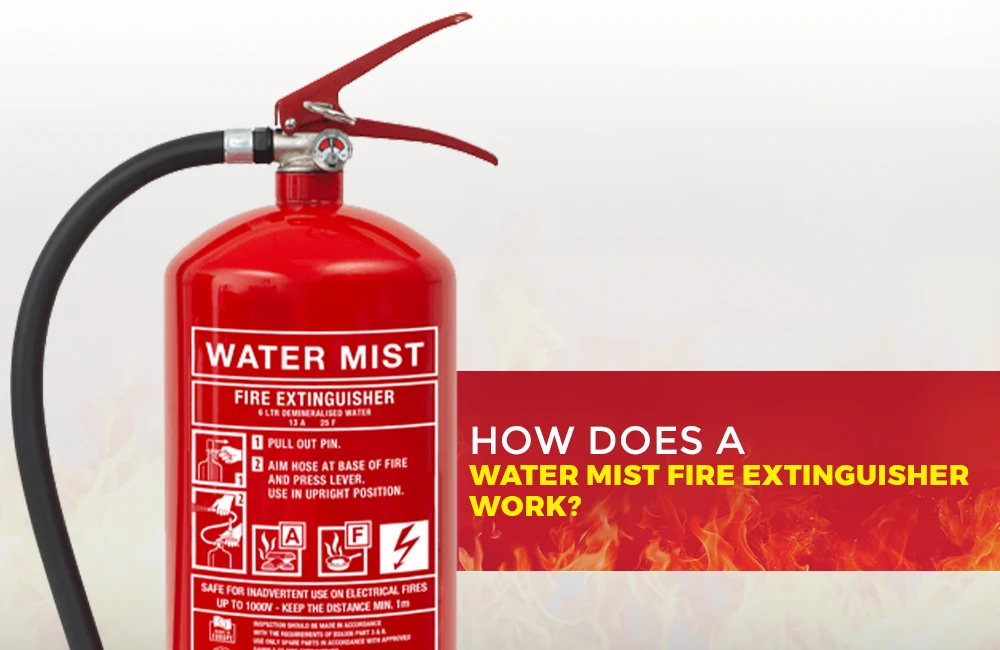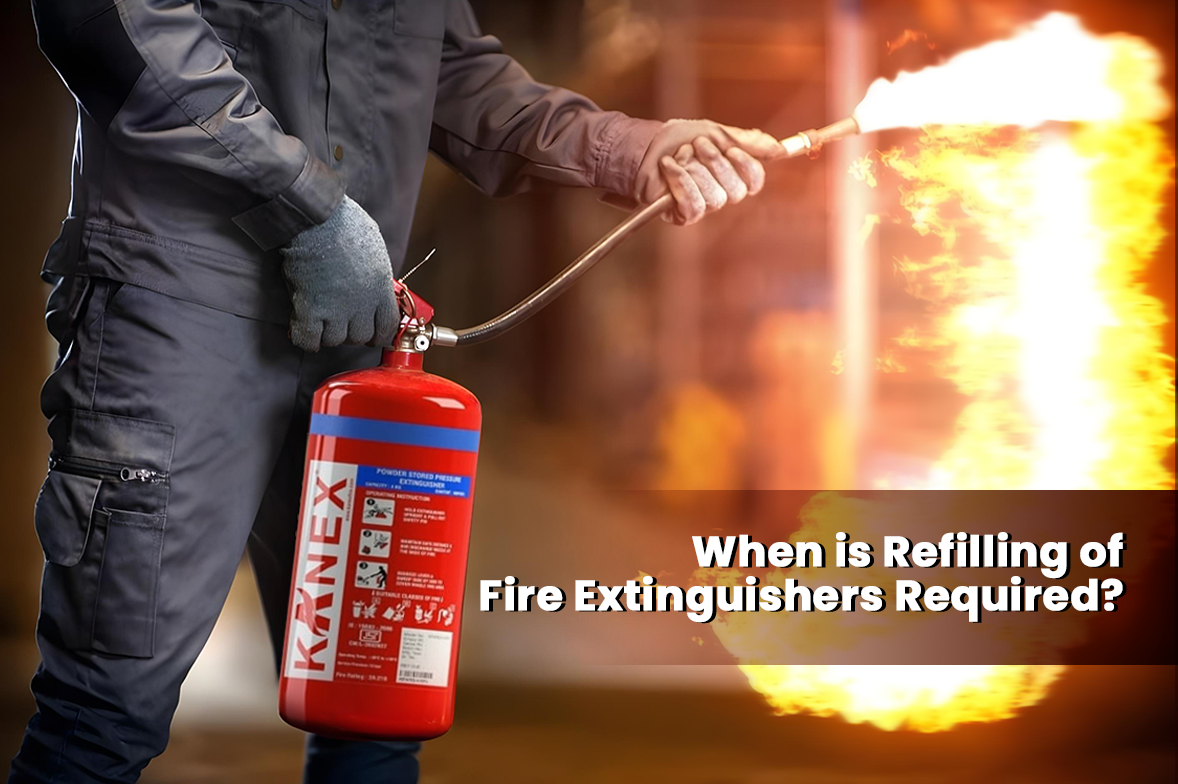Fire safety is a basic aspect of every field, meant to protect lives and property. Amidst all the newly implemented fire safety tools, fire extinguishers are regarded as the most preferable and easiest method to prevent fire from spreading and creating havoc. Among the fire extinguishers available in the market, water mist fire extinguishers have a separate fan base due to their unique technology for effectively preventing fire. The mist technology incorporated in this makes it unique by safeguarding both people and the environment efficiently.
In this blog,we will discuss the working of water mist fire extinguishers, their advantages, and where they are commonly used. This will make you more aware when choosing the best extinguisher for your future use.
What Is a Water Mist Fire Extinguisher?
A water mist fire extinguisher is a kind of extinguisher that puts out fires by using tiny water droplets. Because the droplets are so tiny, they evaporate rapidly, causing a cooling effect that extinguishes the fire.
Water mist fire extinguishers and conventional water fire extinguishers seem to be identical at first glance. There are a few notable distinctions, though. The agent itself is where the most significant distinction lies. “De-ionized water” is found in water mist extinguishers. All minerals that are electrically conducting have been eliminated from de-ionized water. This makes it somewhat comparable to distilled water, even though de-ionized water only contains dissolved minerals and not all other pollutants. This guarantees that a water mist fire extinguisher’s water has extremely low electrical conductivity.
Key Components and Mechanisms
- High-Pressure Nozzle: Changes water into microscopic droplets.
- Ultra-Fine Mist: Enables rapid cooling and fire suppression.
- Non-Conductive Properties: Safe for electrical fires.
- Low Water Consumption: Minimizes collateral damage.
These Water Mist Fire Extinguisher mechanisms can provide high safety compared to traditional extinguishers
How Does a Water Mist Fire Extinguisher Work?
Let us now understand How Water Mist Fire Extinguisher works:
- Fine Mist Technology
The nozzle of the extinguisher spreads the smallest particles of water mist to put out fires and burning objects. - Cooling Effect
The fire actively attracts the mist particles, which quickly evaporate on or close to the surface to effectively cool the fire. - Oxygen Displacement
Eliminates the radicals produced by the fire and lowers the oxygen content close to the flames. The fire is consistently put out by the absence of oxygen and radicals as well as the temperature drop. - Minimal Water Usage
Water mist technology uses only a fraction of the water required by traditional water-based extinguishers, making it ideal for locations like data centers and hospitals, where excessive water use could cause damage.
Advantages of Using a Water Mist Fire Extinguisher ?
- Non-toxic and Environmentally Friendly
Since no hazardous chemicals or gases are utilized or released, there are no worries about the negative effects on the environment. They do not harm the ozone layer in any way. - Minimal Collateral Damage
The use of distilled water eliminates the possibility of collateral damage to the buildings, furniture, and electrical equipment. - Effective for Multiple Fire Classes
They are a flexible option, as they can be used on Class A (solids like paper and wood), Class B (flammable liquids). - Safe for Human Exposure
They are safe to use on both people and animals. It is not a dangerous mist. There is no chance of respiratory illnesses because the water mist is non-toxic. Also, it is suitable for usage in small places, because it has no negative effects, even if breathed.
Where Are Water Mist Fire Extinguishers Commonly Used?
Due to their efficiency and safety, Water Mist Fire Extinguisher Mechanisms are widely used in various industries and facilities, including:
- Healthcare Facilities: Hospitals, care homes, and clinics, where sensitive medical equipment and patient safety are top priorities.
- Data Centers and IT Rooms: Essential for safeguarding servers and electrical components from fire damage.
- Commercial Kitchens: Safe for food environments and highly effective against grease fires.
- Museums and Heritage Buildings: Prevents water damage to valuable artifacts while ensuring fire safety.
Fire safety is not something to be taken lightly; it plays a crucial role in protecting lives and property. Fire extinguishers, therefore, serve as invaluable tools in ensuring safety, and choosing the right extinguisher can make all the difference.
The working of Water Mist Fire Extinguishers offer an advanced fire suppression system that is both effective and environmentally friendly. With their ability to tackle multiple fire types while minimizing damage, they are the perfect fit for various industries striving for fire safety.
Are you looking for effective and reliable fire safety solutions? Safetik provides high-quality Water Mist Fire Extinguishers and is the leading provider of Fire and Safety Services in Kerala. Contact Safetik today to ensure complete protection! Stay alert, stay safe!


